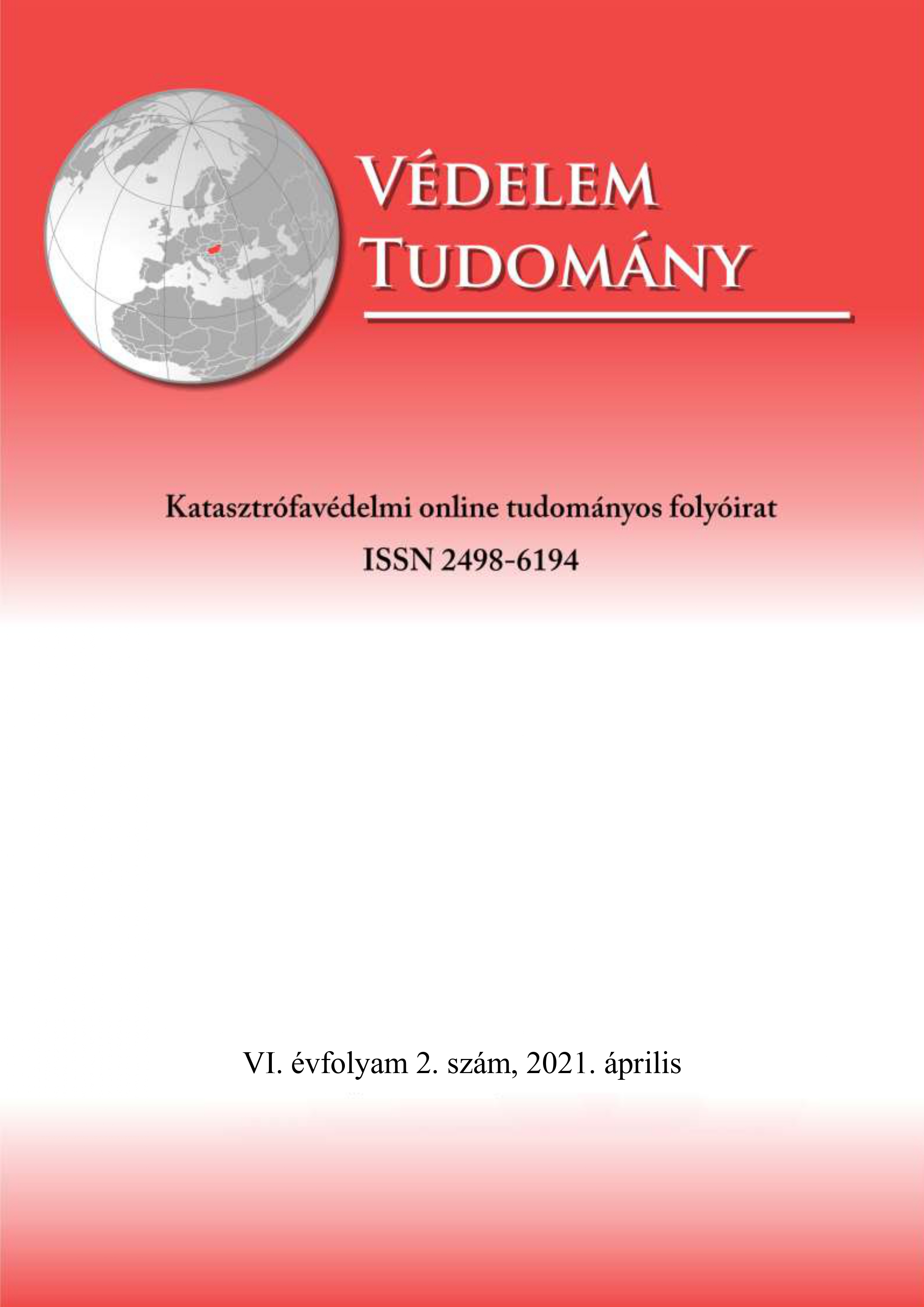Effect of thickness of polystyrene insulation against radiant heat
Abstract
Thermal insulation of buildings is not only important to the owners, but also mandatory due to legal requirements. Energy certificates are also a part of these. For correspondence various thermal insulation materials are used. The authors selected two common and cheap insulating materials for the test, such as polystyrene EPS and XPS types. These are commercially available in different thicknesses. The objective of the article is to examine what thickness can be considered optimal, above which the already increased costs should be taken into account. During our research, we exposed the materials to radiant heat. The authors measured the temperature evolution of the interior of the samples after a heat load of around 100 C. The measurement results showed that above 5 cm thickness a steady state is already established, so the temperature rise stops at a constant value. From the fire protection point of view, it is important to know the thermal properties of insulating materials, as the ignition process is
always preceded by warming.
References
Érces Gergő- Ambrusz József: A katasztrófák építésügyi vonatkozásai Magyarországon. Védelem Tudomány, IV.2. (2019), pp. 45-83.
Érces Gergő - Vass Gyula: Okos épületek, okos városok tűzvédelmének alapjai I. Védelem Tudomány, VI. 1. (2021), pp. 1-21.
Érces Gergő - Vass Gyula: Veszélyes ipari üzemek tűzvédelme ipari üzemek fenntartható tűzbiztonságának fejlesztési lehetőségei a komplex tűzvédelem tekintetében. Műszaki Katonai Közlöny, XXVIII. 4. (2018), pp. 2-22.
Ragács Nikoletta - Nagyné Kovács Teodóra - Szilágyi Imre Miklós - Kerekes Zsuzsanna: Hőszigetelők termoanalitikai vizsgálata a környezetszennyezés szempontjából. Védelem Tudomány, III. 2. (2018), pp. 35-50.
Csoknyai Tamás - Szalay Zsuzsa - Stefler-Hess Nóra: Energiatudatos családi ház tervezése, építészeti és gépészeti optimalizációval. http://e4haz.hu/files/1427991340.pdf Download: 10.03.2021.
Kerekes Zsuzsa: Az oxigén index (LOI) jelentősége a textíliák tűzvédelmi minősítésében Magyar Textiltechnika, I. 3. (2019), pp. 1-11
Szép János - Horváth Antal - Kerekes, Zsuzsanna: Hőszigetelős hatása a faházak elektromos tüzeire. Védelem Tudomány, III. 3. (2018), pp. 23-49.
Kerekes Zsuzsanna - Reich Kristóf - Lublóy Éva: Sugárzó hőnek kitett tűzvédelmi habok viselkedése tűzgátló tömítések alkalmazása esetén, Védelem Tudomány, II. 4. (2017), pp. 1-18.
https://omnexus.specialchem.com/selection-guide/expanded-polystyrene-epsfoam-insulation (03, 2021. EPS,XPS) Download: 10.03.2021.
https://omnexus.specialchem.com/selection-guide/expanded-polystyrene-eps-foaminsulation Download: 10.03.2021.
Tóth Péter - Wagner Károly: Építményszerkezetek tűzvédelmi jellemzői I., Védelem Katasztrófavédelmi Szemle – XXII. 5. (2016), pp. 5-11
Nagy László - Érces Gergő - Kiss Péter - Márton Ferenc - Kiss Róbert - Király András - Hajósi Péter - Szilágyi Csaba: Alkalmazott tűzvizsgálat. Fővárosi Főfelügyelőség. Budapest. 2014. p. 364.
Műanyaghab anyagú hőszigetelések: extrudált, expandált polisztirol https://kreativlakas.com/tobblakasos-hazak/muanyaghab-anyagu-hoszigetelesek-extrudaltexpandalt- polisztirol/ Download: 10.03.2021.
Kerekes Zsuzsanna - Restás Ágoston - Lublóy Éva: The effects causing the burning of plastic coatings of fire-resistant cables and its consequences. Journal of Thermal and Calorimetry, 139. 2. (2020), pp. 775-787.
Bodnár László - Pántya Péter: The Threat of Forest and Vegetation Fires and the Possibilities of Intervention in Hungary. Academic and Applied Research in Military and Public Management Science, XVIII. 3. (2019), pp. 21-31.
Debreceni Péter - Pántya Péter: A fokozottan tűzveszélyes időszakok meghatározásának lehetőségei. Műszaki Katonai Közlöny, XXIX. 1. (2019), pp. 243-260
Rácz Sándor: Firefighting problems in case of large outdoor fires. Műszaki Katonai Közlöny, XXVIII. 4. (2018), pp. 23-32.




